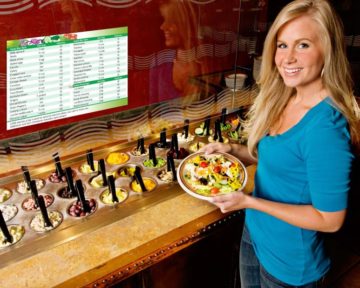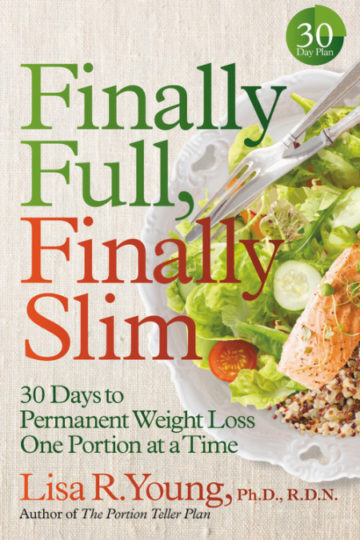
Americans love eating out and spend nearly half of their food budget on foods prepared away from home. Eating out is associated with higher calorie intakes where Americans consume, on average, one-third of their calories from foods eaten away from home. Many restaurant meals provide almost an entire day’s worth of calories. It’s no surprise that we have a growing obesity epidemic in this country.
Finally, after years in the making, consumers will be able to see for themselves just how many calories are in their favorite foods! As of earlier this year (May 7, 2018), the US Food and Drug Administration (FDA) is requiring eating establishments—chain restaurants, coffee houses, bakeries, movie theaters, supermarkets, and convenience stores–nationwide, with twenty or more locations, to post calorie counts on their menus.
The purpose behind the FDA mandate, set forth in the Affordable Care Act in 2010, is to educate consumers on the calorie content of foods prepared outside the home and to make customers think twice before ordering a meal or snack that contains more calories than they should eat for the entire day. In addition to posting calories, eating establishments will now put the calorie numbers into context with a statement informing customers of the recommended dietary intake for adults of 2,000 calories a day. These establishments must also offer additional nutritional information upon request.
As a New York City resident, I have seen calories being posted on menu boards of chain restaurants for ten years. In an effort to combat rising health problems and obesity rates, around ten years ago, the NYC Department of Health and Mental Hygiene required chain eating establishments to post calories. The city’s health department was at the forefront, being the leader in the nation, to require menu labeling.
Now, the city’s health department will enforce the new expanded calorie rules. Chain convenience stores and grocery stores offering prepared foods will now be required to post calorie counts on menu boards.
Here are a couple reasons why this nutritionist thinks posting calories on menus and menu boards is a good idea.
1. Consumers can see how many calories are in some commonly consumed foods and drinks. After all, who would think that some coffee drinks at Starbucks could contain more than 500 calories, that popcorn at the movie theater could contain 1200 calories, and cheese fries can contain 1800 calories. (These are numbers are not typos!) Not to mention the high calorie meals upwards of 1000 calories that so many people are eating.
2. Menu labeling may offer consumers an easy way to cut calories. Hopefully, having calorie information readily available, will nudge consumers to make healthier choices.
A study conducted by the New York City Department of Health and Mental Hygiene found that 15% of customers who used menu labeling purchased 106 fewer calories than customers who did not see or use the calorie information.
Recently, a Cochrane Review found that posting calorie information in restaurants and cafeterias could reduce the number of calories purchased by about 8% (50 calories out of a 600-calorie meal). While this may not sound like a lot, every little bit adds up. Calorie awareness may have further implication s down the road. And there was no evidence that posting calories led to unintended consequences such as increasing the number of calories purchased.
3. Consumers can now compare different foods and drinks and make informed choices. As the Center for Science in the Public Interest, an advocacy firm in Washington, DC, and leaders in the menu labeling movement points out–the regular oriental chicken salad from Applebee’s restaurant contains 1,400 calories while the Bourbon Street Chicken and Shrimp contains 620 calories. Most people would think it was the other way around. With calorie information available, the consumer gets to compare different menu items and choose.
4. Equally important, menu labeling can encourage chain eating establishments to re-formulate their menu items and offer healthier foods in smaller portion sizes. After all, a restaurant probably won’t want to boast that their oversize chicken dish with a slab of mashed potatoes contains more than 2000 calories. It seems as if chain restaurants are already beginning to shave calories off their menus. Researchers from the Johns Hopkins Bloomberg School of Public Health conducted a study and found a decline of around 60 calories (about a 12 percent drop in calories) in new menu items in 2013, compared with calories in new menu items in 2012.
As a nutritionist and portion size advocate, it is my hope that restaurants begin to offer foods in smaller portion sizes, and that consumers choose these healthier products. And as I write in my upcoming book Finally Full, Finally Slim: 30 Days to Permanent Weight Loss One Portion at a Time (Center Street, January 2019) emerging research shows that when offered smaller portions, consumers may, indeed, choose the smaller option. This is a step in the right direction.



 A city gal’s adventures on a rice farm
A city gal’s adventures on a rice farm